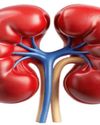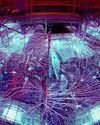Extracting water from air
Scientific India
|March-April 2023
For human beings, nothing can replace water and drinking water has always been in demand with the increasing population.

Though, water covers around two-thirds of the earth's surface but water is still a scarce resource as only 1% of world's water is available as drinking water. With due availability of land and air all around, civilizations before have always moved/expanded in search of required drinking water.
Drinking water based on water cycle of earth (ocean-heat evaporation-cloud-rain-ocean) and then available from natural resources on earth is dwindling with time due to many reasons along with increasing population. People have already shifted to the use of smart technologies to transport, clean, uplift drinking water from other different sources but all these water resource technologies have their own geographic region specific limitations in general and for hilly and desert regions in particular. Earth's atmosphere holds six times more fresh water than all of its rivers combined, so, if it is possible technologically to harvest that water, in areas where people have no other fresh water source, can prove to be a wonder.
Atmospheric water extracting devices extract potable water from the air, either through condensation, exposing the air to desiccants (water-absorbing substances), or by pressurizing the air. With the development of science and technology, scientists and engineers are proposing different technologies to extract water from thin air (from fog) which will help people in getting enough drinking water at location specific with low cost. There are four main methods for extracting water from the atmosphere:
Fog nets: setting up physical nets in humid environments to collect the water in the air
Dew plates: using temperature differences to encourage water to condense on metal plates
Sorbents: using chemicals to absorb water from the air, and then heating the material to extract the water
Denne historien er fra March-April 2023-utgaven av Scientific India.
Abonner på Magzter GOLD for å få tilgang til tusenvis av kuraterte premiumhistorier og over 9000 magasiner og aviser.
Allerede abonnent? Logg på
FLERE HISTORIER FRA Scientific India
Scientific India
Japanese physicists were the first to measure the most tolerant entanglement state, the W state
There are many unusual things that happen in the world of quantum physics.
3 mins
September - October 2025

Scientific India
The Fifth Force: Could It Unlock the Secret of Dark Matter?
What if the universe is powered by a force we've never seen before? For centuries, science has explained nature with four fundamental forces.
3 mins
September - October 2025

Scientific India
A flu test you can chew
As flu season nears in the northern hemisphere, scientists are exploring a surprising new way to detect infection: through taste.
1 mins
September - October 2025

Scientific India
Lab-Grown Kidney Brings Artificial Organ Dream Closer to Reality
In a major leap toward bioengineered organ replacement, scientists have successfully grown human kidney 'assembloids' in the laboratory that mimic key structural and functional features of natural kidneys.
1 min
September - October 2025

Scientific India
Your pumpkin might be hiding a toxic secret
Pumpkins, squash, zucchini, and other members of the gourd family have a surprising trait: they can take up pollutants from the soil and store them in their edible parts.
1 mins
September - October 2025

Scientific India
2025 Nobel Prize in Physics Reveals Quantum Secrets in Superconducting Circuits
The 2025 Nobel Prize in Physics has been awarded to John Clarke, Michel H. Devoret, and John M. Martinis for their pioneering experiments that brought quantum mechanics from the invisible atomic world to the macroscopic scale a system large enough to hold in your hand.
1 mins
September - October 2025

Scientific India
Genomic Evidence Redefines the Evolutionary Age of Mosquitoes
A new genetic analysis has shaken up what we thought we knew about one of humanity's most notorious pests the mosquito.
1 min
September - October 2025

Scientific India
Nobel Prize in Chemistry 2025: Building Molecular Architectures with Room to Breathe
In a scientific breakthrough that bridges molecular design with planetary-scale problems, the 2025 Nobel Prize in Chemistry has been awarded to Susumu Kitagawa, Richard Robson, and Omar Yaghi.
1 mins
September - October 2025

Scientific India
Guardians of Immunity: Nobel Prize 2025 Honors Discoveries that Keep the Immune System in Check
The 2025 Nobel Prize in Physiology or Medicine has been awarded to Mary E. Brunkow, Fred Ramsdell, and Shimon Sakaguchi for their groundbreaking discoveries in the field of peripheral immune tolerance a crucial mechanism that prevents the body's immune system from turning against itself.
1 mins
September - October 2025

Scientific India
'Is cold nuclear fusion feasible?
In early May 1989, two chemists from the University of Utah, Pons and Fleischmann, arrived in Washington, U.S.A. The aim is to present their findings to members of the US Congress.
3 mins
September - October 2025
Translate
Change font size

